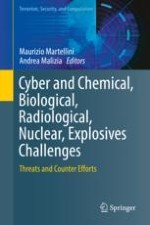2017 | OriginalPaper | Buchkapitel
Bio-risk Management Culture: Concept, Model, Assessment
verfasst von : Igor Khripunov, Nikita Smidovich, Danielle Megan Williams
Erschienen in: Cyber and Chemical, Biological, Radiological, Nuclear, Explosives Challenges
Aktivieren Sie unsere intelligente Suche, um passende Fachinhalte oder Patente zu finden.
Wählen Sie Textabschnitte aus um mit Künstlicher Intelligenz passenden Patente zu finden. powered by
Markieren Sie Textabschnitte, um KI-gestützt weitere passende Inhalte zu finden. powered by
